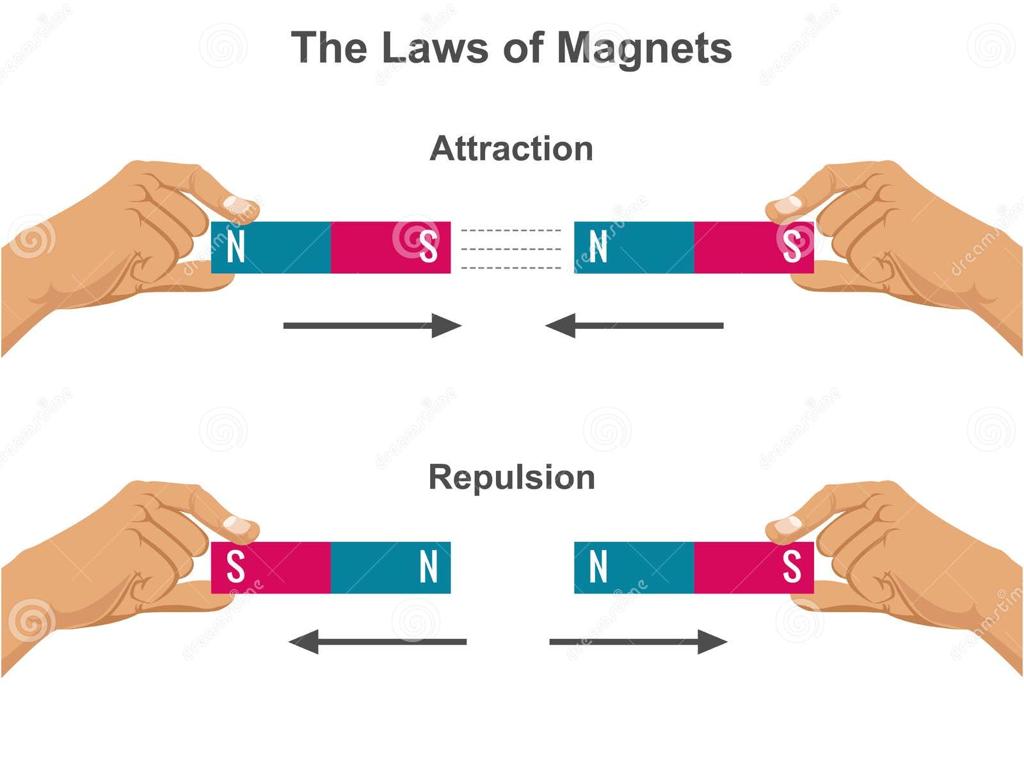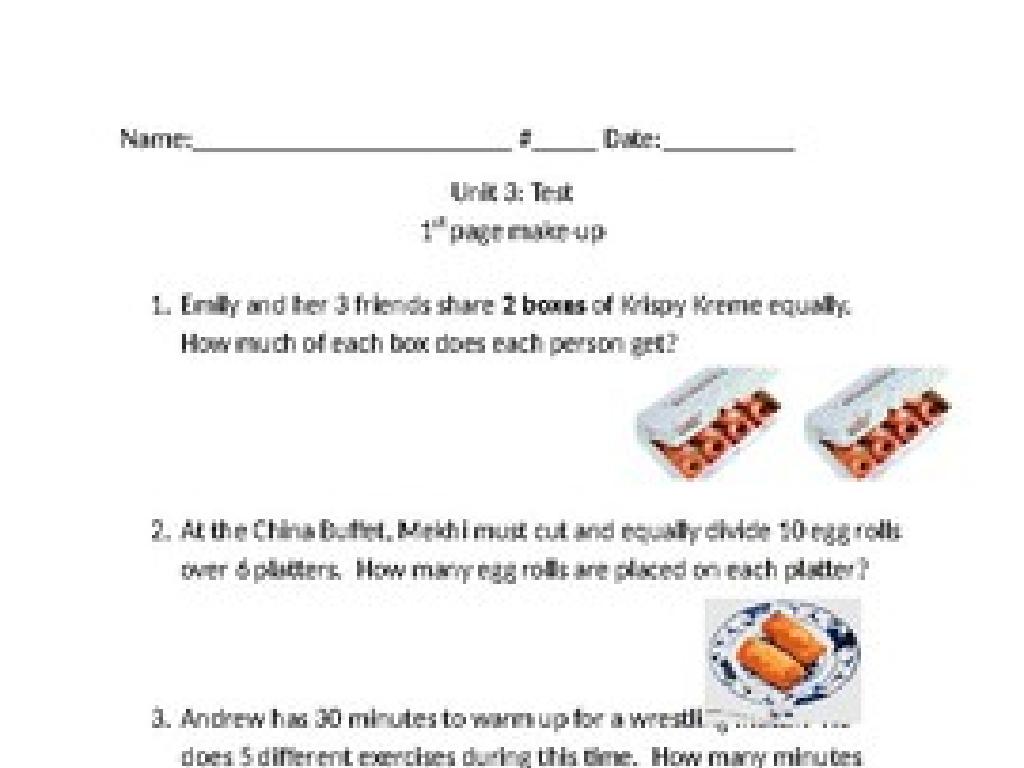Interpret Tally Charts
Subject: Math
Grade: First grade
Topic: Data And Graphs
Please LOG IN to download the presentation. Access is available to registered users only.
View More Content
Exploring Tally Charts
– What is a tally chart?
– Tally charts help us count
– Each tally mark represents one item
– Uses of tally charts
– Great for counting votes, attendance, or tracking snacks
– Let’s practice tallying!
|
This slide introduces the concept of tally charts to first graders. Begin by asking the class if they know what a tally chart is to gauge their prior knowledge. Explain that tally charts are a simple way to keep count of items. Each tally mark represents one item, and every fifth mark crosses the previous four, making it easy to count by fives. Discuss how tally charts are used in everyday life, such as counting votes in a class election, recording attendance, or keeping track of how many snacks are left. Conclude with an interactive activity where students can practice making tally marks. For example, ask them to tally the number of boys and girls wearing blue, or the number of sunny versus rainy days in a week.
Understanding Tally Charts
– What is a tally chart?
– A way to record counts using marks
– Counting with tally marks
– Each mark represents one item
– One mark for each item
– Draw a single line for an item
– Group of five tally marks
– The fifth mark crosses the first four
|
Introduce tally charts to the students as a simple and fun way to keep track of numbers. Explain that each tally mark represents one item, and they can draw these marks to count things. Emphasize that when they reach the number five, they should draw a diagonal line across the previous four marks to make counting easier later on. This visual grouping helps them quickly see how many items there are in total by counting by fives. Use real-life examples like counting toys, books, or even classmates to make the concept relatable. Encourage the students to practice by creating their own tally charts with items they choose.
Let’s Practice Counting with Tally Marks!
– Counting with tally marks
– Group of five marks
– Four straight lines and one across to make five
– Practice drawing tallies
– Draw tallies on your paper like we do on the board
– Get ready to show your tallies
|
This slide is designed to introduce first graders to the concept of tally marks as a visual tool for counting. Start by explaining that tally marks help us count things easily. Show them how to make a group of five marks – four vertical lines to count up to four, and then a diagonal line across these to complete a set of five. Have the students practice drawing tally marks on their paper, guiding them step by step. Encourage them to count out loud as they draw. After practice, ask the students to hold up their papers and show their tally marks. This will help them get comfortable with the concept of grouping in fives, which is a foundational skill in both math and data interpretation.
Creating Our Tally Chart
– Let’s make a tally chart together
– Choose something fun to count
– Maybe count books, toys, or fruits
– We’ll draw our chart
– Time to tally up!
– For every item, we add a tally mark
|
This slide is designed to introduce first graders to the concept of tally charts as a means of collecting data. Start by explaining what a tally chart is and its purpose. Encourage the children to think of items they would like to count, such as books in their room or types of fruits in their home. Guide them through the process of drawing a simple chart with columns for the item names and tallies. As they count their chosen items, show them how to make tally marks for each item in the corresponding column, grouping every five tallies for easy counting later on. This activity will help them understand how to organize and represent data visually. For the next class, prepare to have students share their tally charts and discuss what they counted and the total amounts.
Understanding Tally Charts
– What do tally charts show?
– Counting items using tallies
– Each tally mark represents one item
– Writing numbers from tallies
– Groups of five tallies show a bundle
– Practice with a tally chart
– We’ll use a chart to count objects together
|
This slide introduces first graders to the concept of tally charts as a visual tool for counting and recording numbers of items. Start by showing a simple tally chart and asking the students what information it provides. Guide them to count the number of items represented by the tally marks, emphasizing that each mark stands for one item and that a group of five tallies (four vertical lines and one diagonal) represents five items. Then, help them write the numerical value that corresponds to the tallies. Finish with a class activity where students practice interpreting a tally chart by counting items and writing the correct numbers. This hands-on experience will solidify their understanding of tally charts.
Tally Chart Practice
– Counting tallies together
– Understanding groups of five
– A group of five tallies looks like four lines with a diagonal line across: IIII/
– Recognizing groups of ten
– Two groups of five make a group of ten: IIII/ IIII/
– Practice with tally charts
|
This slide is designed to help students practice counting using tally charts. Start by counting the tallies together as a class to reinforce the concept of one-to-one correspondence. Emphasize the pattern of grouping in fives, which is a fundamental skill in tally chart interpretation. Show them how a group of five tallies is represented, and then demonstrate how two groups of five can be combined to make ten. Use real-life examples like counting items in the classroom or days on the calendar to make the concept relatable. Encourage students to draw their own tally marks in groups of five and ten to solidify their understanding. Provide several tally charts with different numbers of tallies for the students to practice with and discuss their findings.
Our Tally Chart Game
– We’re playing a tally chart game
– I’ll give you items to count
– Use tally marks for counting
– One vertical line for each item, with a diagonal on every fifth item
– Let’s see who’s the quickest!
|
This interactive game is designed to help first graders understand and practice using tally charts. The teacher will provide various items for the students to count, such as pencils, erasers, or blocks. Students will then make tally marks corresponding to the number of items. This activity will reinforce the concept of grouping in fives, which is a foundational skill in both counting and tally chart interpretation. Teachers should prepare a list of items to count and ensure that each student has enough space to create their tally chart. To make the game more engaging, consider timing the students and acknowledging those who tally quickly and accurately. After the game, discuss with the class how tally charts help in counting and organizing information.
Tally Chart Scavenger Hunt
– Let’s explore the classroom!
– Find items and tally them up
– Use tally marks for each item found
– Team up with a buddy
– Share what you’ve discovered
– Discuss your tallies with the class
|
This interactive activity is designed to help first graders understand tally charts by engaging them in a scavenger hunt. Students will search for specific items around the classroom and use tally marks to record the number of items found. They will work in pairs to encourage collaboration and communication. After the hunt, they will present their findings to the class, which will help reinforce their understanding of tallying and comparing data. Prepare a list of common classroom items for students to find and ensure they understand how to make tally marks. Consider having different items for different pairs to keep the activity diverse and engaging.
Reviewing Tally Charts
– What we learned about tally charts
– Show your scavenger hunt tallies
– Share the tallies you found during our fun scavenger hunt.
– Counting with tally marks
– Remember, every 5th tally mark crosses the previous four!
– Celebrating our tally chart skills
|
This slide is meant to recap the lesson on tally charts and celebrate the students’ efforts in applying what they’ve learned. Begin by reviewing the key points of tally charts, emphasizing the importance of grouping in fives for easy counting. Then, invite students to present their tally charts from the scavenger hunt activity, allowing them to share their findings with the class. This reinforces their understanding of tally marks and provides an opportunity for peer learning. Praise their ability to count and make tally marks correctly, fostering a positive learning environment. For the teacher’s reference, prepare to guide any students who may need help explaining their charts and ensure that each student is acknowledged for their participation.
Celebrating Tally Chart Mastery
– Great job learning tally charts!
– Tally charts help us count items
– Like counting books, toys, or even birds outside!
– Give yourselves a big cheer!
– Keep practicing at home!
– Try making your own tally chart with family!
|
This slide is a conclusion to celebrate the students’ understanding of tally charts. It’s important to praise their efforts and reinforce the concept that tally charts are a tool they can use in various situations. Encourage them to continue practicing by counting objects around them and creating their own tally charts, which will help solidify their understanding. This positive reinforcement will boost their confidence and interest in the subject. For the next class, consider having students bring in their own tally charts to share with the class.





